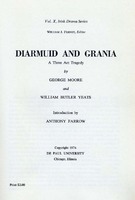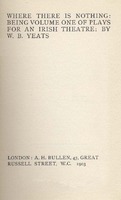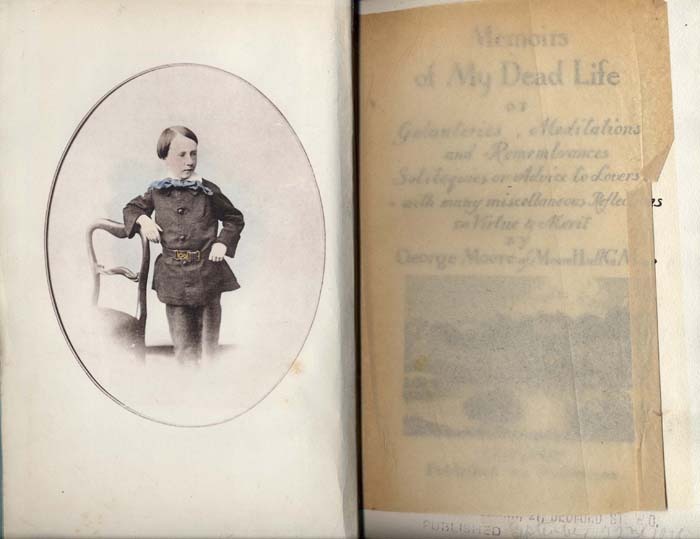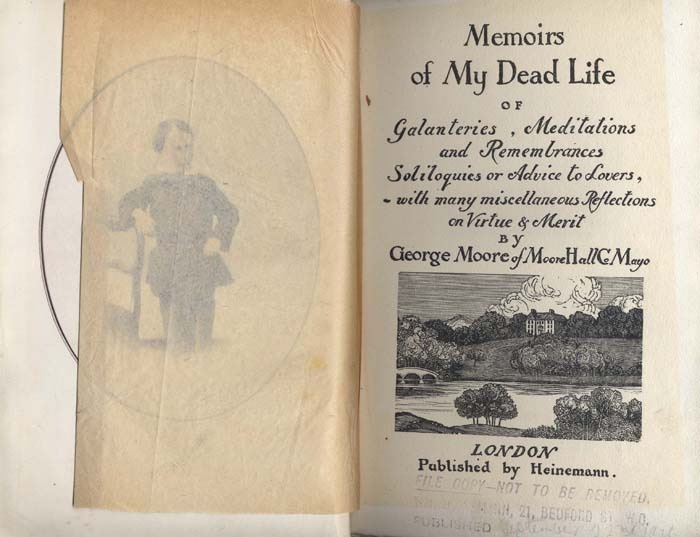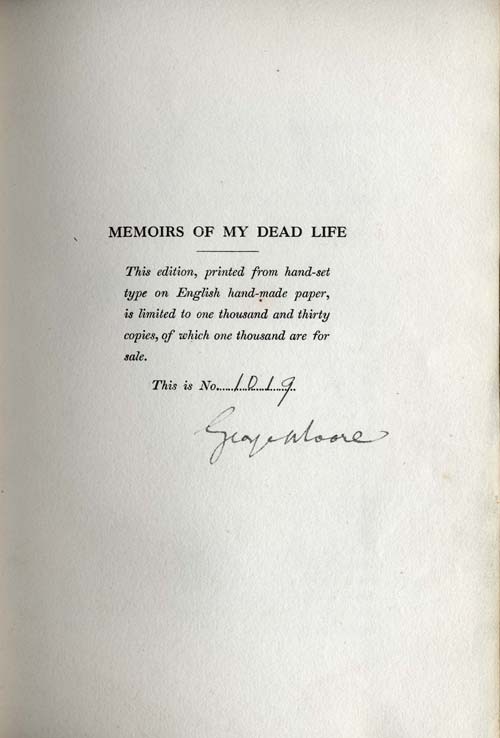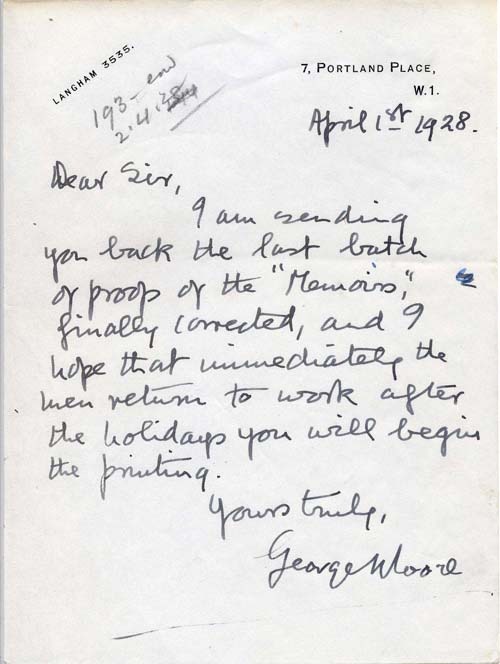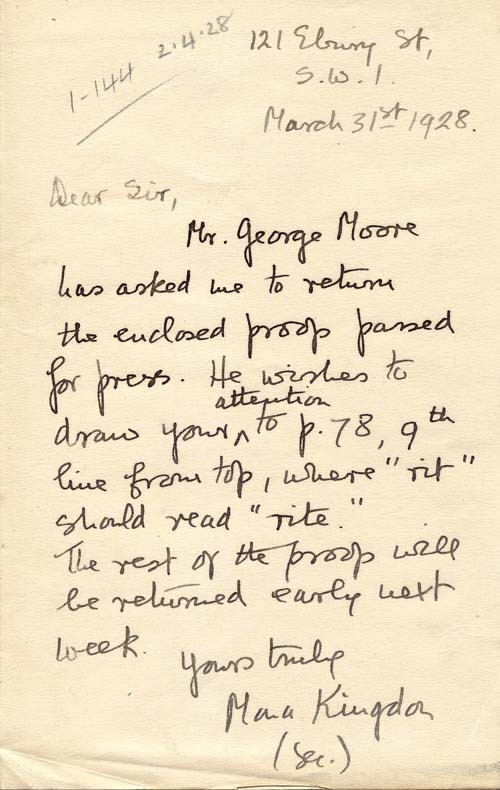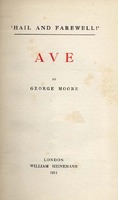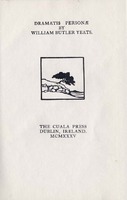George Moore
George Moore is perhaps best known for his short stories, novels, and autobiographies, although he also wrote many plays. His interest in drama brought him close to W. B. Yeats in 1898 as the Irish Literary Theatre began. Since neither Yeats, Lady Gregory nor Edward Martyn had experience in the theatre, they contacted Moore and asked him for advice and assistance.
George Moore, 1852 -1933
W. B. Yeats, 1865-1939
Diarmuid and Grania: A Three Act Tragedy
Chicago: De Paul University, 1974.
PR 5042 .D5 1974
Moore had grown dissatisfied with the English theater and soon threw himself wholeheartedly into the new theatrical venture. He removed himself from London to Dublin and began taking an active role in planning and rehearsals.
Moore also wrote two plays that are among his best, The Bending of the Bough and in collaboration with Yeats, Diarmuid and Grania. While the two worked together well enough as business partners, their different approaches to the creative process produced many disagreements while working on Diarmuid and Grania. The play opened to mixed reviews and it soured the working relationship between Moore and Yeats.
W. B. Yeats, 1865-1939
Where There is Nothing
London: A. H. Bullen, 1903.
(SPL) PR 5904 .W4 1903a
Following the 1901 season, Yeats and Lady Gregory did not renew their invitation to Moore to assist them with the theatre, and Moore moved back to London amidst a flap with Yeats on another collaboration, Where There is Nothing.
The story was developed jointly by Moore and Yeats, but Yeats completed the work on his own and subsequently refused to give Moore any credit for its development. Moore retaliated by including uncomplimentary portrayals of Yeats, Lady Gregory, and others associated with the Irish Revival in his lengthy autobiographical work, Hail and Farewell.
George Moore, 1852 -1933
Memoirs of My Dead Life
London: William Heinemann, 1921.
(RARE) PR 5042 .M4x 1921
Following his departure from the Irish Literary Theatre, Moore continued to write novels and plays. His well-known autobiography, Memoirs of My Dead Life has earned a well-deserved reputation for candidness, and it is filled with useful information since he interacted with most of the well-known writers of his age in England, France and Ireland. This copy of Memoirs is a publisher’s file copy, not for sale in the original press run. It is signed by Moore and includes his correspondence with his publisher regarding this edition.
George Moore, 1852 -1933
“Hail and Farewell!”
London: William Heinemann, 1911.
(SPL) PR 5042 .H3 1911 v.1
Both Moore and Yeats wrote publicly of their experiences and opinions of each other, Moore in his Hail and Farewell! (published in 1911) and Yeats in his Dramatis Personæ (published in 1935). Each writer focused on the other’s shortcomings -- personal and professional. While they respected each others’ artistic abilities, the two men were temperamentally incompatible.
Yeats, William Butler, 1865-1939
Dramatis Personæ
Dublin: Cuala Press, 1935;
reprint, Shannon: T.M. MacGlinchey for Irish University Press, 1971.
(SPL) PR 5906 .A537 1971

